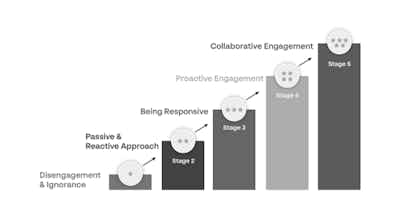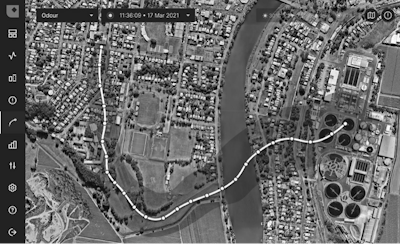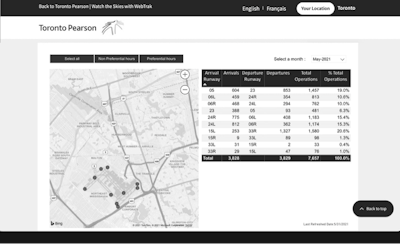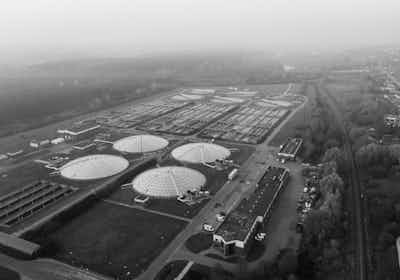City outskirts are expanding; with more people chasing open spaces and greater property affordability over urban centres.
Many businesses are now allowing greater work flexibility in response to the pandemic. This means there are more people working from home than ever before, rather than needing to be in or near a physical workplace. This is also contributing to this shift out of inner-city suburbs.
As outer-metropolitan perimeters are extended though, residents are now much closer to buffer zones of industrial facilities. This includes wastewater and waste management facilities that were once isolated from communities. We are seeing new challenges emerge for facility operators, who were previously able to work with buffer distances between their plant and the community.
Environmental Incidents of any size can present one of the biggest threats to the success of any operation. In today’s connected world, the slightest incident at any Industrial operation can rapidly generate media headlines, negative attention of millions of social media followers, high-level government scrutiny of course – a highly difficult situation for management teams who are accountable for their operation’s success.
Now and in the years ahead, building community trust with collaborative and transparent engagement is necessary. So, how can this be done effectively industrial operators that also have to focus on profitability?

As outer-metropolitan perimeters are extended though, urban communities are now much closer to buffer zones of industrial facilities.
Co-existing with the community and regulators as a wastewater/solid waste facility
A poll was taken at a recent Envirosuite webinar asking if attendees had experienced issues with surrounding communities. Those in attendance included operators from various industries including waste management and wastewater facilities.
50% of attendees responded that they had experienced community issues.
As industrial operators, it is important to recognise that public conversations about your organisation are happening right now. Even more important to note is that your community can be your worst critic or your best supporter. Either way, and what’s said online or in day-to-day conversations can have a real impact on your facility.
Every community is composed of people from vastly different experiences and opinion. So, how can you best approach community engagement to keep everyone informed?
For operations to progress, there needs to be a balance between the needs of the facility and the community, industrial operators, and regulators. When stakeholders are satisfied, operators can manage environmental expectations themselves, they face less community pressure, and there is no need for regulators to take complex action.
This means operators can focus on moving forward with fewer interruptions and less intervention, which is a better outcome for everyone. Wastewater and solid waste services are critical for communities to function.
But this ideal situation is not necessarily the reality for many facilities.
Operators with ageing infrastructure are now facing community pressure to modernise operations; complaints are on the rise and shifts in urban rezoning rules are bringing expansion plans to a standstill.
The solution lies in building trust. Regulators, communities, and industry need to be confident they are collectively acting in the best interests of everybody involved – and this is only possible with open conversations around transparent, accurate data.
When there is trust and collaboration between industry and community, operators can better understand the root cause of issues and immediately start taking measures to effectively address them.
What are the 5 stages of community engagement?
At Envirosuite, five core stages of community engagement have been identified that range from ‘Disengagement and ignorance’ through to ‘Collaborative Engagement’, the latter of which is far more consultative and has much stronger community involvement.
Solid waste and wastewater management operators often exist between various stages of managing risk and building trust.
Here's a closer look at each of the key stages and what they mean for facilities, regulators, and the community.

The 5 Stages of Community Engagement
Stage 1: ‘Disengagement and Ignorance’
Stage one represents operators that are the least engaged with their community. There is little collaboration and discussion between industrial operators and those living in surrounding areas – or in some cases none at all.
As opposed to finding suitable solutions by having open conversations about present and emerging issues with their community, these sites often act in isolation. Most of the time this does not get to the root of the problem or address concerns.
An example would be an operator showing their concern for the community by landscaping around their perimeter to mask their existence. While this makes their presence less imposing and it does not necessarily address deeper issues the community may be associating with the facility’s operations, such as those tied to poor air quality or odour impact.
Stage 2: ‘Passive and Reactive’
At stage two – the ‘passive and reactive’ approach – operators aren’t completely disengaged, but they aren’t going out of their way to engage with the community either. Another appropriate name for this stage could be ‘the bare minimum’.
Operators that fall into this approach are meeting every requirement but only engage with the community if they are directly approached or legally bound to do so. A case example of this may only be responding to community odour complaints when there is the legal requirement to do so.
Even with this approach, a low level of collaboration and interaction with the community means there’s no method to provide regular input on their concerns or submit any observations. There’s also an unlikely expectation on the community to understand and make sense the data that is being presented to them.

Providing the community with spreadsheets or basic compliance reporting places an unlikely expectation on them to understand the data.
Stage 3: ‘Being responsive’
At stage three the amount of community engagement from facilities continues to slowly increase. Facilities at this stage respond as needed, but also have good responses based on data. However, they do not have the same level of transparency or openness to community relationships as we see when we move up to stages four and five.
When you are at stage three or higher, the community has an innate understanding that you will be receptive to their concerns and that you are willing to work with them. They also have a basic understanding of what processes can be undertaken to make sure their concerns are suitably addressed.
This stage is where you first start to see a return on investment, because with this stronger community engagement often comes fewer hurdles for your facility when it comes to things like identifying issues as quickly as possible to limit downtime or expanding your operations.
As communities grow, so does the need for solid waste and wastewater facilities. Obviously, operators also want to be able to grow with this demand. However, communities can have a huge influence over whether or not projects are able to go ahead. A strong pushback from your community could bring your plans to a halt. For many facilities, this is when they recognise the economic cost of non-engagement and inaction.
Stage 4: ‘Proactive Engagement’
Stage four is when community engagement begins to become a core part of operational planning. Operators show a clear willingness to work with the government and wider community and hear, understand, and satisfy their expectations.
It’s at this stage that operators acknowledge their potential to generate odours and subsequently work proactively to minimise the impact and the likelihood of poor air quality issues arising in nearby areas.
This involves efforts such as committing to placing sensors in the community, making data publicly available and having a level of transparency with the community around what they are doing on a routine basis.
Rather than just telling the community that they are doing everything they can to manage the risks and to minimise impacts, operators at stage four present their community with the data they need to see and understand it for themselves.

Envirosuite’s reverse trajectory modelling can be used for internal investigations of any odour investigations, but also to show the community what may have caused it.
Stage 5: ‘Collaborative Engagement’
The limitless potential of technology is continuing to allow industrial operators to realise theirs. Stage 5 – which is the most collaborative – is now becoming a reality for industrial facilities to works towards and achieve.
Operators at stage five go beyond presenting meaningful data to communities, and instead also create portals and avenues where communities are invited to become a part of the conversation.
When communities are given the opportunity to voice concerns, provide input and contribute to the solution, everybody stands to benefit. A prime example of this working well outside of industrial operations is in airports. Many airports today have deployed advanced, two-way communication solutions for communities to voice their concerns and while airport operators respond with tailored content based on accurate data to specifically address their concerns.
Industrial operators are now following this trend for obvious reasons. As a plant operator you are less likely to receive formal complaints from regulators, as community members know they can have a productive conversation with you directly – one that leads to positive action.
Giving communities a voice also means they are more likely to tolerate your facility, as they know if issues do arise, you will actively work with them towards a resolution.
This collaboration – and strong understanding of community expectations – gives solid waste and wastewater operators the ability to underwrite their social license to operate (SLO).
Effective engagement is the key to keeping the harmony for operators, regulators, and the community.

Major airports around the world are a prime example of Stage 5. Toronto Pearson is now using location-based data to build tolerance and community trust in their operations.
Kick-start community engagement at your solid waste or wastewater facility with Envirosuite’s environmental intelligence tools
Sustainable operations stand on three pillars – compliance, optimisation, and community engagement.
Envirosuite’s environmental intelligence tools make it possible to comply with permitted conditions seamlessly and effectively, optimise odour mitigations, and hold conversations that build trust with stakeholders.
Simplify monitoring of conditions – such as odour and air quality – that are notoriously difficult to measure and act on.
Access real-time weather and emissions data to determine the potential impact up to 72 hours into the future.
Resolve complaints and mitigate problems swiftly to avoid chronic issues and maintain a good reputation in and positive relationships with nearby communities.
Receive early warning signs of threshold breaches and take preventative action to avoid problems progressing.
Defensible data from reverse trajectory modelling helps you refute or confirm responsibility for complaints.
Schedule maintenance activities in optimum weather conditions and plan for high-risk shifts to minimise odour emissions in nearby communities.
Envirosuite’s environmental intelligence for solid waste and wastewater facilities is trusted on a global scale and backed by 30 years of expertise. Designed for rapid deployment, our monitoring and forecasting solutions can be implemented in as little as a few days.
Contact our team to discuss your requirements and take the first step towards improving community engagement at your facility.
